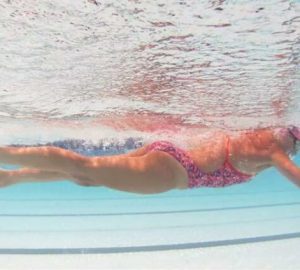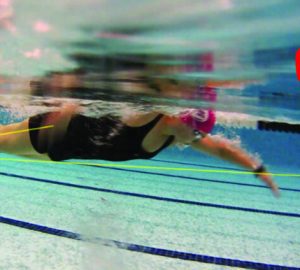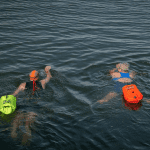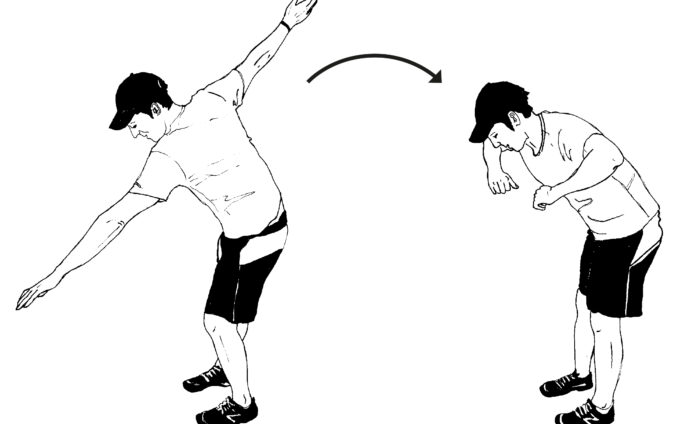
How to warm up on land for swimming
Get the timing right
Ideally, you want to enter the water and feel like there is continuous momentum from your land-based warm up to your swim. The aim is to promote blood flow to your shoulders and to elevate your breathing and heart rate but without leaving you exhausted, so you need enough time for this but not so much that you get tired or that your muscles get cold again between finishing the warm up and starting the swim.
For a training session this is easily manageable. At an event you will need to take into consideration a number of variable factors such as registration, race briefing and the amount of space you have while waiting to be called to the start.
The ideal would be about 20 minutes before the start of the swim with a smooth transition to the water. If this is not possible due to the nature of the event, strive to do the best you can in the circumstances, and don’t panic. Any warm up you can do on land is better than nothing. As you get closer to the start you will likely have less and less space as more competitors enter the start area, so try to get your exercises with bigger movements done first.
Do the right exercises
In the good old days, before scientists proved that we’d got it all wrong, you’d see swimmers contorting themselves into extreme stretches before getting into the water. You still sometimes see this from people who have been away from the sport for many years.
Save your static stretches until after your swim. Doing them before may decrease performance and increase your risk of injury.
Instead, focus on mobility and activating the muscles you will need for swimming through replicating swimming movements.
Use the right tools
The good thing about a dryland swimming warm up is you don’t actually need any tools or special kit. However, I would strongly recommend getting hold of a set of elastic cords or some Therabands. Both are cheap, can be packed up small in your swimming bag and are really useful.
Be flexible
Have a range of exercises you can draw on so you can adapt to the space and the time you have available. Rolling your shoulders can be done when packed in close in a holding area with other swimmers. Band exercises need space and something to fix the band to. If you’ve only got limited time, focus on the arm swimming exercises as these tap into a wide range of swimming muscles. The warm up exercises suggested here will give you a good starting point but feel free to develop your own routine.
Triceps swings
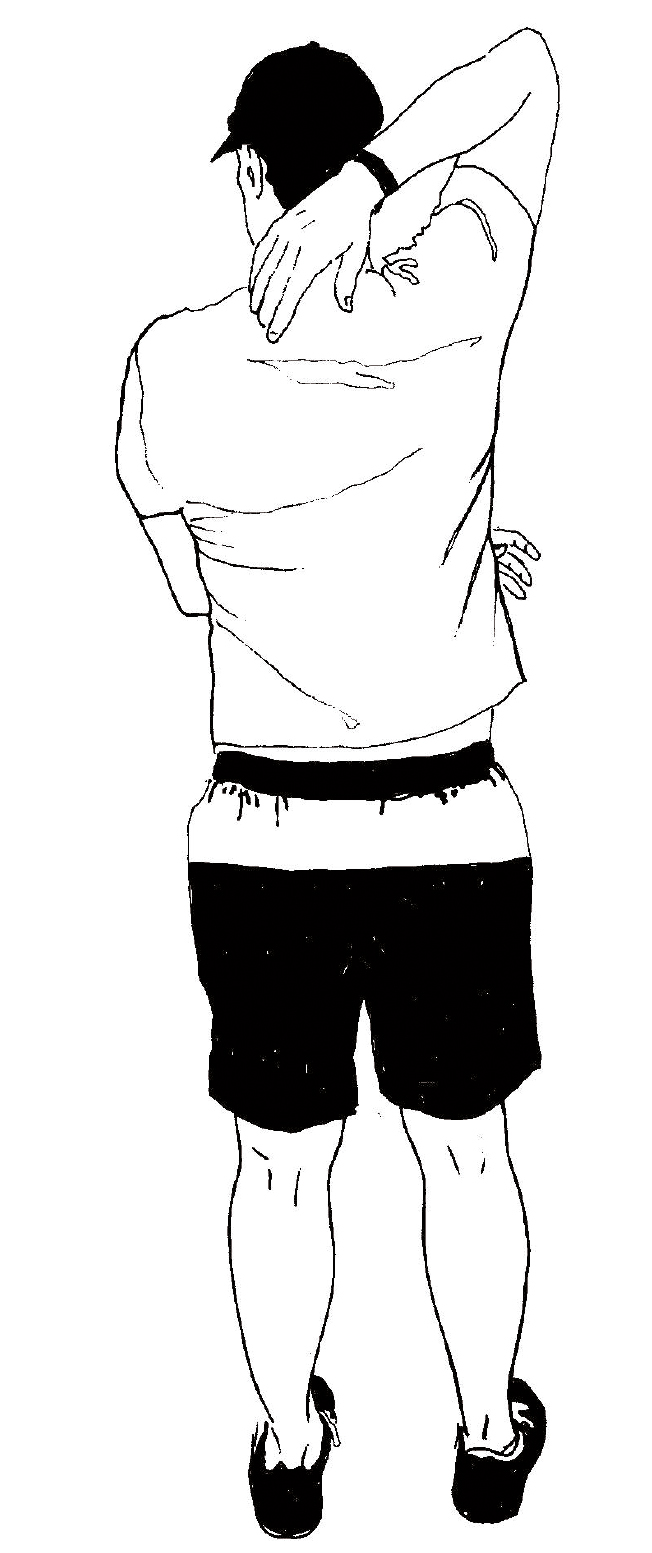
Swing the arm from down by the hip sideways up over the head to the opposite ear. Repeat 20 times, alternating arms with a loose relaxed continuous rhythm. Repeat the exercise a further 20 times, this time reaching to the opposite shoulder.
Chicken wings

Bend over at the waist with the upper body leaning forwards. Stick out your elbows with your hands in front of your chin (‘chicken wings’) and draw circles with the elbows. Increase the size of the circles until the arms are straight and wind-milling. Maintain this movement for a few seconds and then reduce the size of the swings until you return to the chicken wings position.
Trunk claps
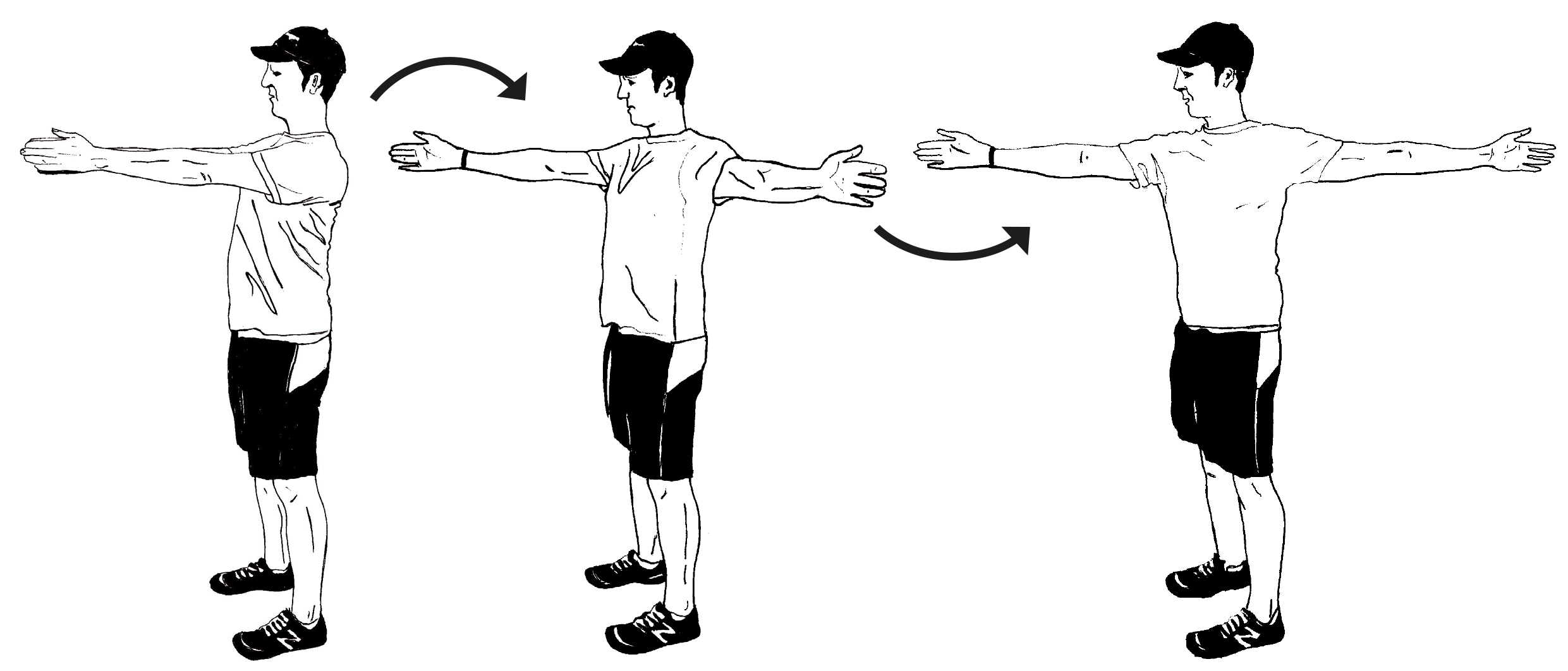
Stand straight with arms out in front parallel to the ground and palms together. Swing one hand backwards, travelling parallel to the ground through its full range and bring it back to ‘clap’ the hands and send the opposite hand back. Repeat 10 times with the head still, followed by 10 times with the head following the path of the hand as it travels behind you.
Sword draws
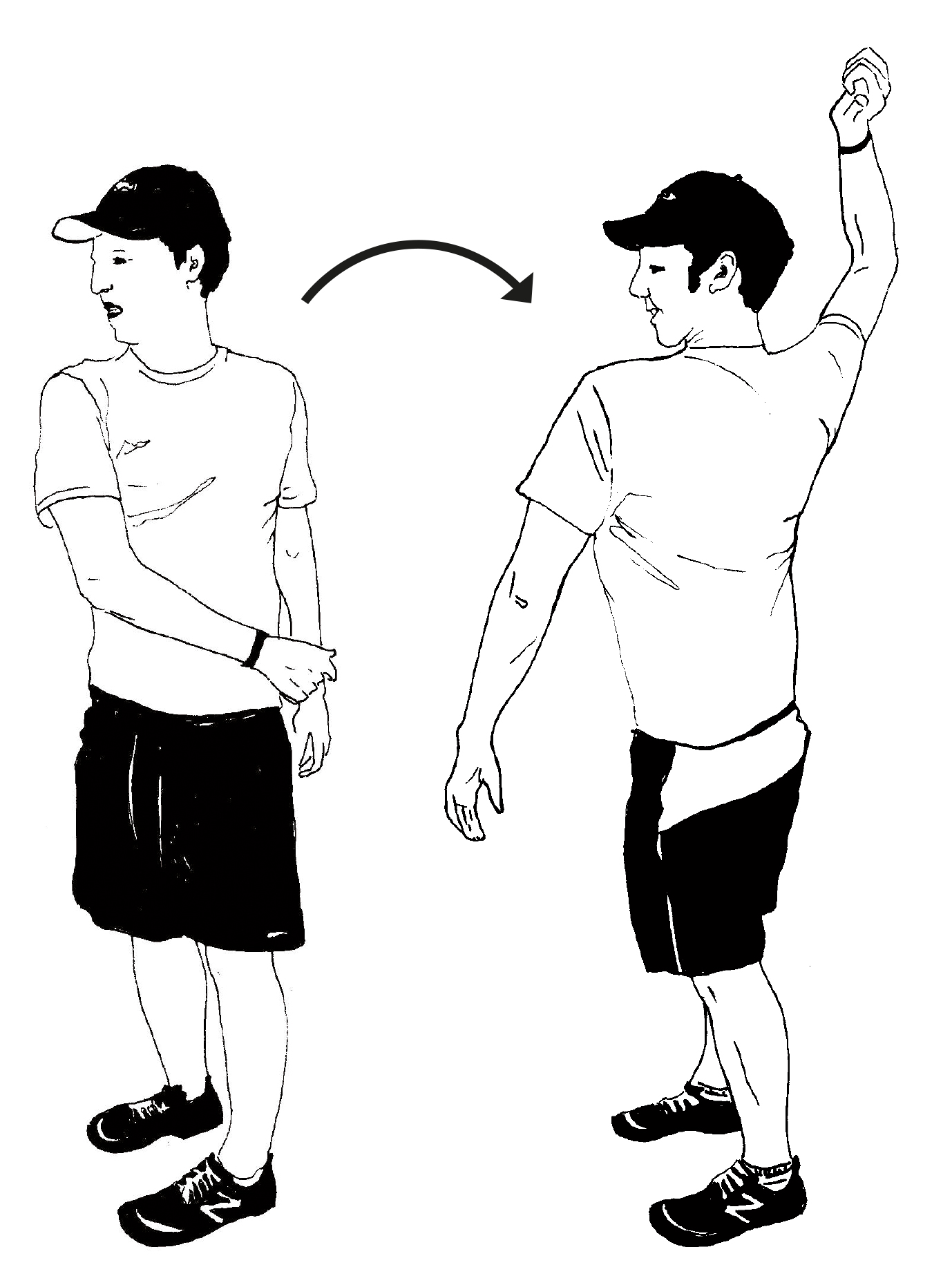
These combine upper body rotations with a sweeping movement of the arm. From a standing torpedo position take the hand of the lead shoulder and place it into its opposite pocket. Draw an imaginary sword and as you rotate back arc the hand up and around to the base of the neck to finish above and behind the head. Do 10 on each side.
Standing torpedo
This will help the trunk to mimic the front crawl body position. Keeping the head still, swing your shoulders from side to side aiming to bring each shoulder in turn as close as possible to your chin. Allow the hips to follow the shoulders.





